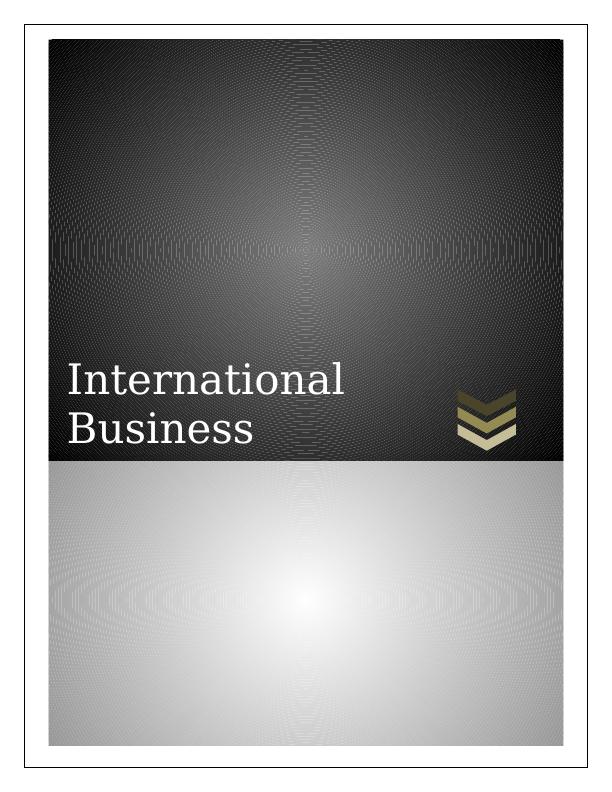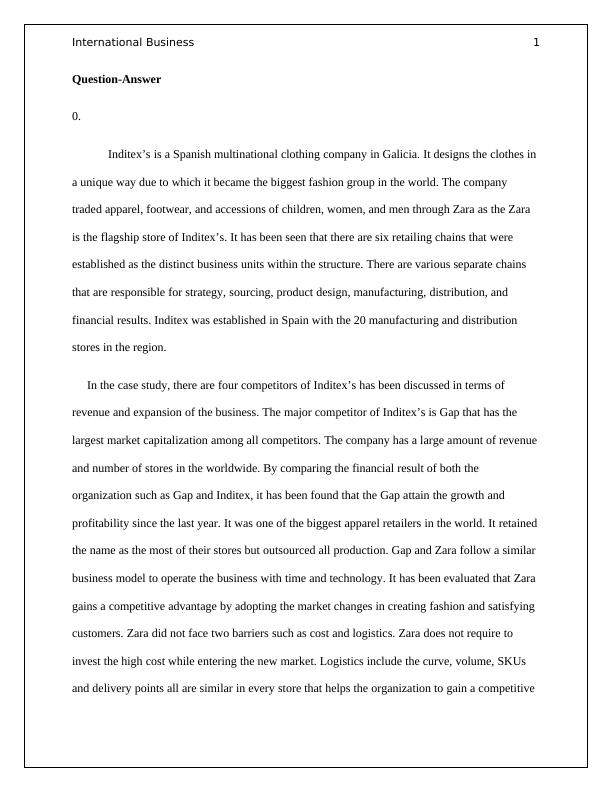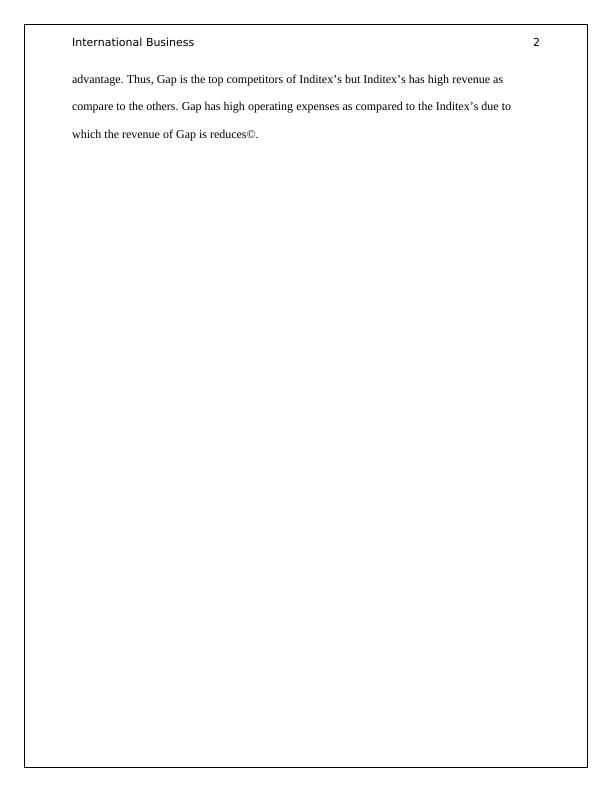Zara's International Business Expansion Strategy: A Case Study
Answering discussion questions based on the Zara: Fast Fashion case study.
10 Pages1765 Words334 Views
Added on 2022-11-23
About This Document
This case study discusses Zara's international business expansion strategy. It covers topics such as Zara's cost leadership strategy, its multi-brand strategy, and its Uppsala internationalization model. The study also evaluates the advantages and disadvantages of Zara's expansion strategy.
Zara's International Business Expansion Strategy: A Case Study
Answering discussion questions based on the Zara: Fast Fashion case study.
Added on 2022-11-23
ShareRelated Documents
End of preview
Want to access all the pages? Upload your documents or become a member.
Key Weaknesses of ZARA - Doc
|5
|965
|167
MGMT7170 - The Clothing Company H&M - Case study
|14
|3106
|55
Logistics and Supply Chain Management for Zara: A Comparative Analysis with Dell and Myers
|12
|3139
|257
Zara Company Organizational Management Theory
|14
|3776
|455
Global Information System Strategy
|7
|1460
|209
Business Environment of Zara : Report
|14
|3526
|46



